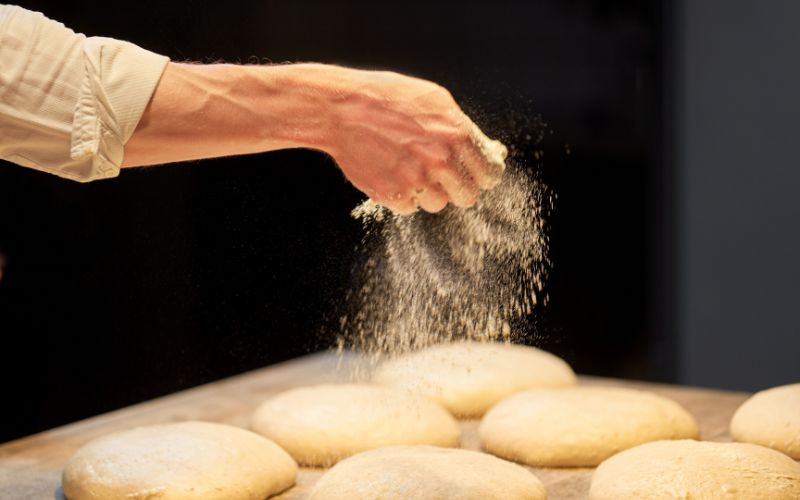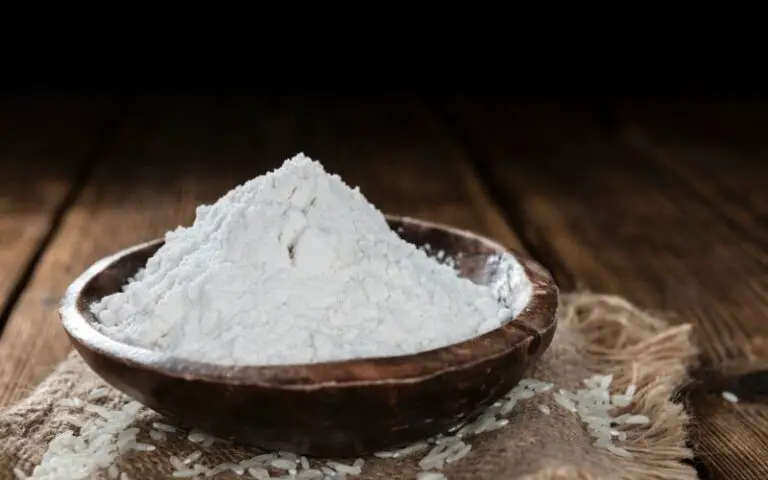Can Bread Dough Be Used for Pizza? Surprising Twist!
While almost everyone loves a slice of pizza, most people are not versed in the preparation process. Of course, there is much confusion about the ingredients required.
For instance, there is much confusion about the type of dough needed to make the most savory pizza.
While others use bread dough to make their pizza, there are some questions about the results. So, can you use this dough for your pizza?
Yes, you can use bread dough to make pizza. Bread dough produces the same results as pizza dough when used as a substitute. This is because bread dough has the same ingredients as the traditional dough used to make pizza. However, you must add some tweaks for the best results.
This article discusses using bread dough as a substitute in pizza production. It also discusses the use of frozen bread dough in the process and much more.
What Are the Key Differences between Bread Dough and Pizza Dough?

Have you ever wondered about the difference between bread dough and pizza dough? Let’s start to unravel this mystery by looking at their key ingredients.
Both bread and pizza doughs utilize similar core ingredients such as flour, yeast, water, salt, and occasionally oil. However, there are distinctly unique characteristics each of them possesses.
Bread Flour for Pizza vs. All Purpose Flour
Firstly, consider the types of flour used in both doughs:
- Pizza dough is generally made with a high-protein flour that gives it a firmer texture.
- Bread is typically made with all-purpose or wheat flour, which lends it a softer consistency.
Hence, when making pizza with bread dough, expect your crust to be softer than regular pizza dough.
The Role of Yeast in Bread and Pizza Dough
Yeast also plays an important role in these two types of doughs:
- Bread includes more yeast content, which allows for more rise during baking, resulting in fluffiness.
- Pizza has less yeast, aiming for a thinner crust so it doesn’t rise as much when baked.
Water Content: Hydration Levels
Lastly, let’s talk about hydration levels, i.e., the water content contributing to their respective textures.
Here are the things to note:
- Pizza crusts have higher hydration levels, making them softer, stickier, and easier to stretch into thin bases, perfect for any Italian pizza recipe.
- In contrast, bread has lower hydration levels, making its texture slightly harder.
So whether you’re kneading your homemade yeasty delight or using a store-bought bread mix for your fresh pizzas – now you understand the key differences.
These variations will impact your final product.
Here are the considerable differences between bread dough and pizza dough:
| Bread Dough | Pizza Dough |
|---|---|
| Needs lesser amounts of salt. | Requires higher amounts of salt. |
| It does not need an extended fermentation period. | A longer fermentation period is required. |
| It does not need higher cooking temperatures. | It requires higher cooking temperatures. |
Now, amplifying your culinary skills is as easy as applying these fresh dough baking techniques for pizza and bread dough. Happy baking!
How to Use Bread Dough for Making Pizza
Let’s dive into making pizza with bread dough, a twist on the classic Italian pizza recipe. Yes, it’s possible and remarkably simple!
Here are some steps you can follow:
Preparation Phase
Start by kneading your yeast dough. Remember to thaw it well before starting if you’re using frozen bread dough.
If at home, use bread flour for pizza. This helps achieve a light and fluffy texture in the crust.
Create small balls out of your dough; this will help when stretching or rolling out your homemade pizza base.
Baking Phase
Bake at about 375 degrees, but be ready to adjust accordingly depending on your oven and crust thickness.
Baking bread dough as a pizza requires keen observation due to the different yeasts used in both types of dough (yeast in bread and pizza dough).
Topping Phase
Add toppings of your choice onto the stretched-out base – there is no limit here!
You are guaranteed excellent results using these fresh-dough baking techniques for pizzas and bread.
Remember that there might be minor differences between making regular pizzas with typical high-protein flour (pizza dough) and using all-purpose or wheat flour (bread mix).
Nonetheless, you can use them interchangeably. Now, use that bread mix to create deliciously fluffy homemade pizzas!
It’s all about experimenting with your available options while enjoying each step.
So, who knows? You may find yourself preferring this thicker-crust version over traditional thin-crust ones.
One thing is clear: Whether it’s an Italian staple or a creative adaptation, there’s always room for more pizza.
The Results: Expectations from a Pizza Made with Bread Dough
Making pizza with bread dough might not be your typical Italian pizza recipe, but a unique twist can yield interesting results.
Bread flour for pizza and the right fresh dough baking techniques for pizza and bread can create a tasty homemade pizza.
Crust Characteristics
When using yeast dough like bread dough to make your homemade pizza, there are a few things you should expect:
- Breadier Texture: Compared to typical pizza crusts, pizzas made with bread dough tend to have a thicker and fluffier crust due to its higher yeast content.
- Longer Baking Time: The baking time might be slightly longer than when making conventional pizzas due to the thickness of the bread flour-based crust.
- Kneading Requirement: Kneading is essential in making both products. However, kneading dough for pizza requires less time than kneading ordinary bread.
Taste Profile
Considering the taste profile, there’ll be a slightly yeasty taste. Unlike regular pizzas with minimum yeast content, it’s just enough to let it rise once.
More yeast in bread and, therefore, in this kind of homemade pizza means additional flavors, which could alter the taste profile slightly towards more characteristically bready nuances.
Thus, you can use bread mix for your next homemade weekend special or surprise potluck dish.
It’s convenient, smart, and enjoyable, especially when you’re out of specific ingredients or simply looking forward to some culinary experiments!
Tips on Using Frozen Bread Dough for Your Pizza
Making a delicious homemade pizza using bread dough can be easy and fun, especially when you have frozen dough. Here’s how to turn that chilly lump into a spectacular pizza crust.
Thawing is Key
Always remember it’s critical to thaw your yeast dough before you start. A slow thaw in your fridge overnight should do the trick.
This also allows the yeast in the bread and pizza dough to wake up and give rise to a softer base.
Rolling Out Your Dough
After thawing, kneading the dough for pizza is essential. Be sure not to over-knead; otherwise, your crust might become tough.
After kneading, remember that bread flour for pizzas can be a bit stickier than regular flour owing to its higher protein content.
So, don’t shy away from using some extra flour while rolling out your base.
Making Your Pizza
When it comes to making pizza with bread dough:
- Achieving an Italian-style thin crust may require more effort as the bread mix used for the base tends to puff up during baking owing to its higher yeast content.
- Freshly prepared toppings are always best on any homemade pizza.
- Bake at around 375 degrees, adjusting accordingly depending on your oven and desired crust thickness.
- The results of baking bread dough are often lighter and fluffier than typical thick or thin-crust pizzas but taste just as good!
In all this process, remember, practice makes perfect! Experiment with fresh ingredients or different types of cheese until you find what makes your perfect pie.
Enjoy bringing out that inner chef while creating something deliciously satisfying!






